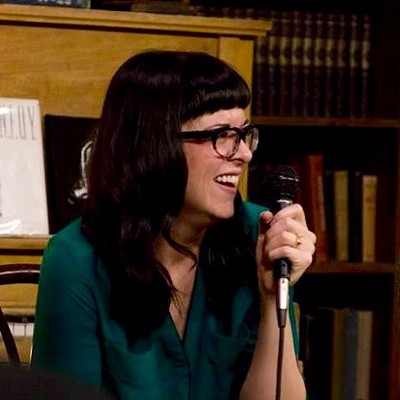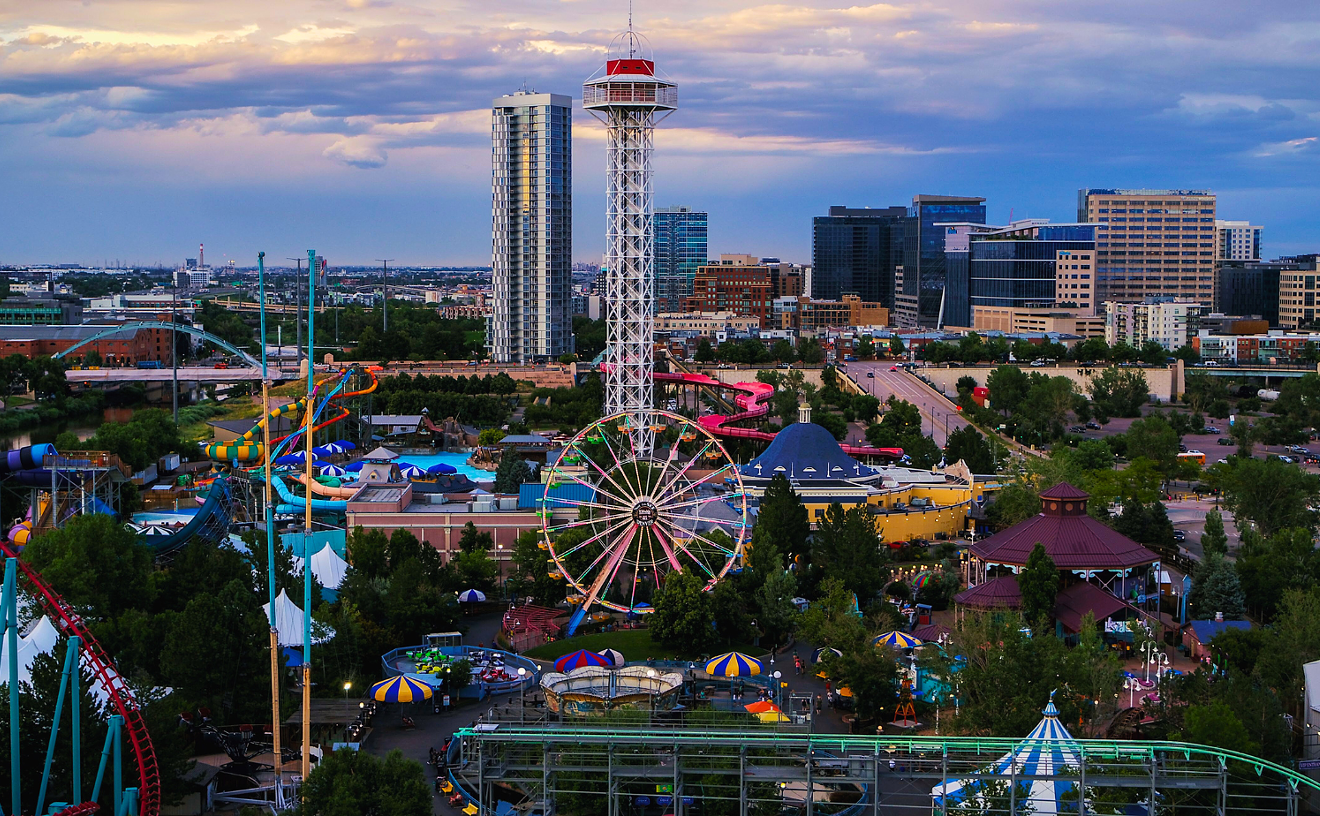For filmmakers Faythe Levine and Sam Macon, an in sign painting was born one day when Levine happened to observe a sign painter changing the hours on a restaurant's window with a paint brush. Through the film Sign Painters -- which screens for one night only tomorrow evening, August 26, at the Sie FilmCenter -- the collaborators dug deep, interviewing active sign painters of all ages about this everyday occupation and art form. The oral, anecdotal history and visual impact of sign painting on the American landscape are equally explored in this documentary about a once-ubiquitous handmade trade.
In advance of the film's showing, Westword spoke with Macon about how he and Levine tackled the exploration of a craft that has very little written history available.
See also: Kevin Hennessy on making folk art and other signs of the time
Westword: This is addressed at the beginning of the film, but it seems that the everyday person might not even realize that signs are created by human beings -- not everything is computer-generated. Why did you decide that this was a story you wanted to tell?
Sam Macon: That fact itself was a big motivating source for me. Faythe and I have been longtime collaborators, and sign painting was something she had thought about (making a film about) for a long time. Essentially, Faythe had a group of younger friends back in Minneapolis who were interested in letters and they ended up, basically through happenstance, meeting the gentleman in the film named Phil Vandervaart. He's a Minneapolis-based sign painter. He was changing the hours on the cafe that they were hanging out at, and it was kind of like this realization that he was a sign painter -- and a realization that the entire neighborhood of the West Bank in Minneapolis was painted by this one guy. He totally dominated the visual landscape.
Fast-forward twelve, fifteen years -- Faythe brings this up to me. I'm like an amateur graphic designer and I've always appreciated lettering and font-nerd stuff. I had always gravitated towards interesting signage or had a appreciation for it, but I had never really put it together that it was a trade or an industry. I never knew that there were people who had this job or called themselves "sign painters." So it was really my own ignorance of that -- being a person who was probably more interested or tuned in than some -- and thinking, if I've never thought about this profession existing, a lot of people have not thought about it.
As we started making the film, I realized (in talking to others) that almost regardless of the age of the person, they didn't known sign painters existed. It wasn't just young people who had grown up in a world where significantly less people were making signs -- it's that even when it was the go-to way to get a sign made, people didn't know about it. It's something that went from being ubiquitous to almost non-existent. It was a trade that was happening all over the place, all of the time; signs are meant to convey information. They aren't really meant to be public works of art, though they have become that. This has been reinforced by the fact that (signage) looks so shitty and homogenized now.
I've had people tell me, 'your film ruined the way everything looks for me; I drive around and I get mad about the signs on any given street.' (Laughs.)
Obviously, you meet one sign painter and they talk about another sign painter. But how did you connect with the sign painters featured in the film? How did you choose whom to include?
There was a trick to it -- as a documentarian, one of the most satisfying things you can do is really contribute to a pool of information as opposed to packaging known information into a film. We were definitely able to do that because there is so little public documentation of it. There was such a lack of information it was almost shocking.
The way we approached the film was very journalistic; we didn't do a lot of pre-scripting. We knew we wanted to make a film that did right by the community, which we were only really beginning to learn about. And we also wanted to make a film that was interesting to the public and would be a conversation-starter. We knew we needed to be as comprehensive as possible in terms of styles, the modes within sign painting, showing a broad spectrum geographically and also, disciplinarian-wise. We began with personal connections that we already had -- we knew some of the younger guys who were mostly Pacific Northwest-based who had all gone on to become sign painters. We started talking with them and they were our guides in terms of tracking down other sign painters. We also might come across a local sign painter profile, so we would contact the journalist (who wrote it) and go to that town and interview that sign painter.We also interviewed Tod Swormstedt at the American Sign Museum -- his family has been involved with signs in some form or another his whole life. Once we got to him, he started really laying out who some of the more heavy-hitter, elder statesmen sign painters were. I spent a lot of time on the telephone -- we were really just cold-calling these people and asking them if we could come to their studio or house and interview them. One person would lead to another.
From there we began learning about the trade -- we learned about the Letterheads movement was an essential component we had to get in the film. Realizing that Los Angeles Trade Tech was the last technical college offering sign painting as a vocational trade when originally, there were schools all over the place offering it. We knew that the school needed to be documented. Then we also knew that we wanted to talk to people like House Industries because we wanted to show that sign painting isn't this old-timey, retro fetish kind of thing. We wanted to show that it is extremely relevant. We wanted to make a living, current film, not something overly romanticized.
Was there a person or a fact or a story that you learned about in the making of this film that surprised you?
So many things. When we went to LA Trade Tech, what was really amazing to hear was that Doc Guthrie (who runs the sign painting program) is a graduate of the program. He graduated over thirty years ago and has been teaching sign painting for twenty; in the late 80s-early 90s, the enrollment at the school was so low that the state was going to end the funding for it. Doc started scouring the Los Angeles area, looking for people who would work for the class to get them enrolled and keep the school alive. He would go to Venice and approach graffiti writers and say, 'hey, did you know that you can make a living doing what you're doing by basically putting letters on buildings?'
He would give these guys his card and they would actually call. Doc also worked in conjunction with parole officers to get people in the system an education doing what they loved because graffiti definitely begins with an obsession with letters. It's an obsession with letters as opposed to an obsession with destroying property, no matter what your opinion of graffiti is. So, he single-handedly kept the school open with twelve or thirteen people. Now, the school is at an all-time high for enrollment.
Were there any sign painters that you wanted to speak with for this film that you weren't able to reach?
I have a variation on this question -- we interviewed people that didn't make it into a film for a multitude of reasons. I mean, you shoot 120 hours of footage and some people aren't going to make it into the story. But one person that did not end up in the film is probably the most elder statesman of the bunch, Rey Giese. He was a sign painter in San Jose for like seventy years, actively working, maybe more. He was 93 and was still working when we got ahold of him. He had dropped out of high school to join the Shell Oil sign crew and go up and down the Pacific Coast Highway basically and paint signs. His house was a museum -- his garage where he had been working for at least the last fifty years was one of the most amazing places I had ever been. He was very elderly and it was very difficult for us to get him to feel comfortable about what we were doing. I think he was from a different world that did not include people maxing out their credit cards to make a film. I think filmmaking, regardless of the subject, was connected to Hollywood and big money and all of that for him. He was sharp for his age, but not razor sharp.We interviewed him after some teeth pulling and then when it came time to get the releases for the film, he wouldn't really sign it; we were trying to do this over the phone and it had ben a year since we were out there. I flew out to San Jose with the express purpose of getting him to sign this release and making him feel comfortable about it and showing him photos and parts of the book that we put together about sign painting to get him excited. I started to win him over and then he tells me he has to send this to his lawyer, who had been his lawyer for like sixty or seventy years.
I had a conversation with the lawyer and he was a real ball buster, but I kind of finessed it. The lawyer told me he would talk to Rey about it. Apparently, the lawyer Googled the project and found some photos of Rey that we had put on our blog -- we had been blogging the process of making the film -- and Rey was irate. He saw it as us using his images and "profiteering" off of his images was the word I believe was used. I was like, profiteering? We're like bleeding money to make this thing in the first place. So the lawyer was like, 'you guys screwed up by using those pictures.'
So, the guy who had been doing it longer than anyone and had told some very rich stories for us is now on a hard drive. We were unable to track down family or anyone to convince him that this project would be beneficial. So that was really unfortunate. I don't blame Rey as much as I blame the lawyer; that's the takeaway. You can print that and I hope he reads it. (Laughs) But it is a real tragedy that Rey isn't included in this film or the book.
Sign Painters screens for one night only tomorrow, August 26 at 7:30 p.m. at the Sie FilmCenter. Tickets are $7 to $10; for more information or to purchase tickets, visit the theater's website.
Be my voyeur (or better yet, let me stalk you) on Twitter: @cocodavies
Follow @WestwordCulture











